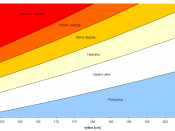Obesity
Obesity is a problem that is growing in the modern day, it is only just being recognised as a worldwide problem1 (globesity)2 by the World Health Organisation (WHO). There are many questions that need to be asked such as what causes obesity? , What factors contribute to obesity on a day-to-day basis? And what are the global effects of obesity?. Others include is obesity a growing problem throughout the world? , What are the trends of obesity? And does it affect specific people or everyone? . All these questions need to answered.
Currently, obesity has many definitions, which are used depending on the scientists or countries discussing it4. The main definitions are population means, body mass index (BMI), waist circumference and percentage body fat. Scientists generally use the body mass index of an individual to see whether or not they are obese. BMI is calculated by using a simple equation which is weight (kg) divided by height (m2)1.
This number can be broken down into different categories4 normal weight (18.5-24.9) overweight (25-29.9) clinically obese (30-39.9) or service obese (40+)(see Figure 1)4.
Figure1
The negative side to this is that muscle weighs more than fat. A person who exercises and does some weight training would probably weigh more than an average person so could be classed as obese. To class body mass by population you take a group of people and calculate the mean weight. A person is ranked on how obese they are compared to that specific population in regards the waist circumference. It is common to measure the amount of abdominal fat a person has and it is know that men with a waist of 40 inches are at risk of obesity. The problem with this process is that it begins to break down with...


